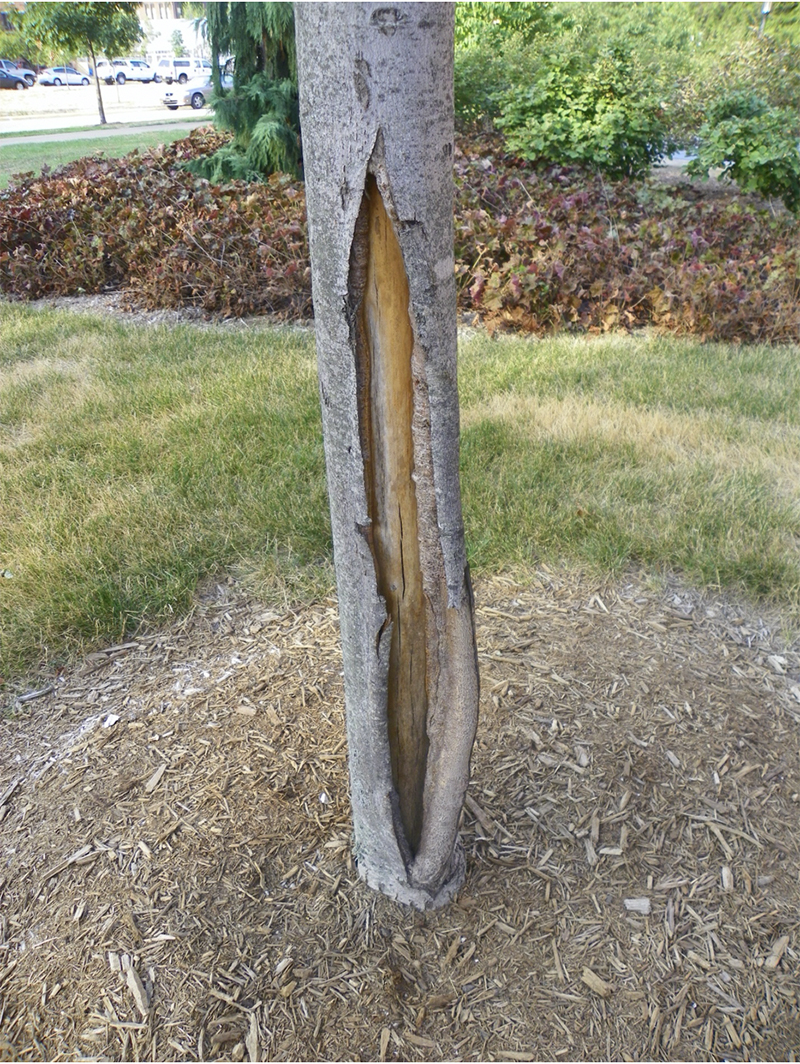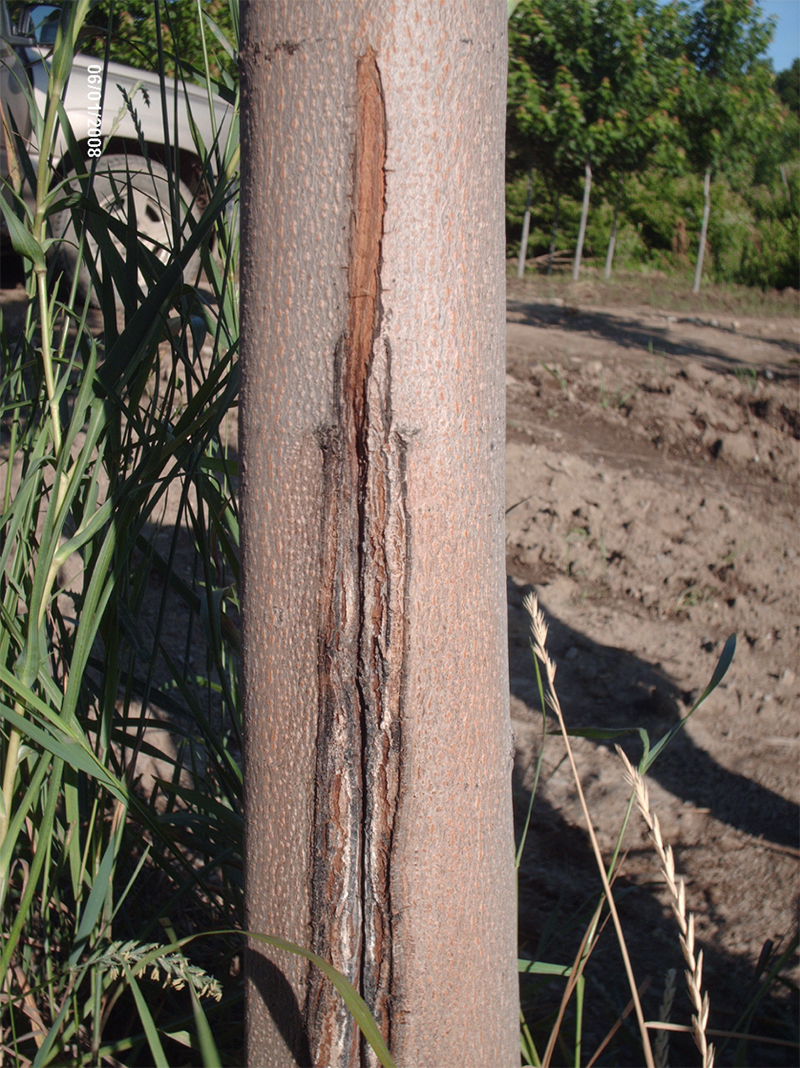Picture of the Week
March 8, 2021
Southwest Injury of Trees
Kyle Daniel, Nursery and Landscape Outreach Specialist, Department of Horticulture and Landscape Architecture, Purdue University
Bark cracking is a phenomenon that occurs in several species of trees and can have many causes. One of the most common types of bark cracking is termed Southwest injury. Southwest injury occurs during the winter months on the lower section of the trunk on the southwest side. This happens when there is a sudden temperature drop, for example, the sun going behind a cloud during the winter. Usually this occurs on thin-barked trees, such as Acer spp., Cercis spp., Malus spp., and others. Thick bark trees tend to be more resistant to cracking due to a greater lag in the freeze/thaw cycle. Trees that are under stress due to environmental factors, herbicide injury, and/or insect and disease are more susceptible to cracking.
Click image to enlarge
No matter the initial cause of the crack, the common denominator of a crack in the bark is a pre-set wound. The freeze-thaw cycle during the cold months causes the point of injury to expand and contract. Like with glass, a small point of injury in bark will expand and contract due to sudden heating or cooling, thus causing a large crack.
Any type of cracking that occurs, originates from a point of injury, such as a pruning or other mechanical injury. These are horizontal cracks that can range from <1" to the entire length of the trunk, though are usually localized near the bottom of the trunk.
White tree guards may help prevent this from occurring due to the reflection of the sun, preventing overheating on the bottom of the trunk. In order to prevent cracking, try to prevent any type of mechanical damage that could cause cracking in the winter. Bark cracks become visible most often during the late winter/early spring. In some circumstances a healthy plant may heal, partitioning off the damaged area, but the bark on a plant under stress, due to drought, herbicide damage, etc., may last the entire life of the tree.
See this other article on Southwest Injury by Kyle Daniel in the Purdue Landscape Report.




